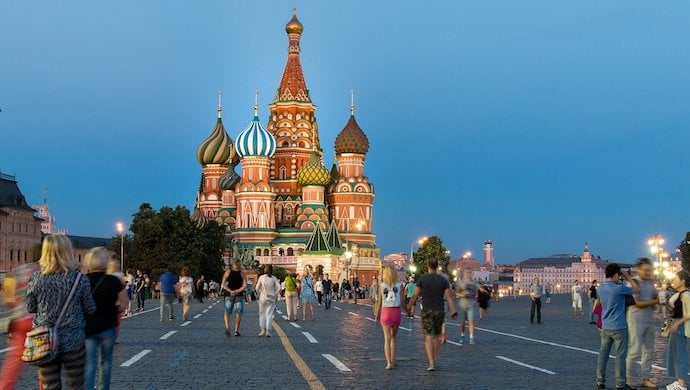
For decades, Russia has been at the forefront of the world’s technological innovation. From creating one of Europe’s first universally programmable computer and pioneering the first supersonic passenger jet, the Tupolev Tu-144, to – who can forget? – laying down the gauntlet in the space race via cosmonaut Yuri Gagarin’s feat of being the first human in space to orbit the Earth.
Throughout its history, science and technology have been ingrained into Russia’s socio-cultural fabric and identity; however, when people think of Russia’s achievements, they tend to associate with those that occurred during the USSR period which has been largely state-led.

Due to the drastic reduction of state support for science and technology in the nineties, the new millennium ushered in a paradigm shift of privatisation (with guidance from the government) to cultivate not only modern tech innovators but also entrepreneurs.
This is where Russia’s tech ecosystem is now. The nation is ready to show the world the technologies it has been developing; especially with regions such as Southeast Asia now gearing up for the Fourth Industrial Revolution. Here are some reasons why Russian start-ups and their technologies are worth a punt.
New entrepreneurs leveraging Russia’s strong R&D heritage
During the wave of Russia’s economic boom in the 2000s, the government sought to reinvigorate Russia’s tech environment to prioritise modernisation and innovation, especially since the brain drain led many Russian scientists and university graduates to move to Europe or the US during the nineties’ slowdown.
Since then, corporate and private investors have been funding and even acquired Soviet-era research institutes, which are now playing a key role in fostering homegrown innovations. Two of these institutes include the Moscow Institute of Physics and Technology (MIPT) and the Saint Petersburg State University which are within the top 30 of this year’s World University Rankings BRICS ranking by QS. While such institutes fostered a strong tech culture in Russia, many graduates preferred moving to global corporates in overseas hubs such as Silicon Valley, Europe, and China.
Today, the world has become more global and interconnected, while also showing that even small entrepreneurs can challenge big businesses via disruption. We’re seeing this shift in Russia with a new generation of startup founders, such as Telegram’s Pavel Durov and Revolut’s Nikolay Storonsky, who graduated from Saint Petersburg State University and MIPT respectively.
Russia’s tech ecosystem is no longer heavily state-led. The country is bringing about a new wave of development and liberation underpinned by entrepreneurship, privatisation, and deregulation. This is producing a new generation of world changers, which are characterised to be as more mature (they’ve already cut their proverbial teeth as entrepreneurs), possess advanced technical degrees and have a strong appetite for exporting tech startups.
Technologies spearheading Russia’s revolution

What’s interesting about Russia’s startup landscape is that many businesses are now market-ready, instead of focusing on emerging technologies that need to undergo a gestation period. As such, the country’s ecosystem is being increasingly dominated by companies with B2B and B2B2C models serving enterprises and consumers with products and services utilising advanced tech such as cybersecurity, computer vision, artificial intelligence, and machine learning. These are the technologies that will power the products and services needed for Industry 4.0.
Russia has the technology and technical talent needed to plug in Southeast Asia’s growing demands, yet the limited access to private funding capital has been the main resistance for growth faced by commercial tech companies.
Marrying Russian tech and Southeast Asian scale
Opportunities for growth are evident if we can build a bridge between Russia and Southeast Asia. Commercialization of Russian technology is now at an all-time high and the startups’ advanced innovations can unleash a new wave of possibilities for governments, enterprises, and consumers in our region.
We are at the advent of a new, global technological revolution; meaning that sustainable growth and shared prosperity cannot be achieved if ecosystems operate in silos. By combining advanced Russian technology with access to the regional market and untapped capital investment (Southeast Asia is, after all, home to a highly active venture landscape), we can edge closer to creating a suite of companies that are innovative and dynamic to meet the region’s tech demands.
—
Editor’s note: e27 publishes relevant guest contributions from the community. Share your honest opinions and expert knowledge by submitting your content here.
Join our e27 Telegram group here, or like e27 Facebook page here.
Image credit: Pixabay
The post How Southeast Asia can benefit from a new wave of Russian innovation appeared first on e27.